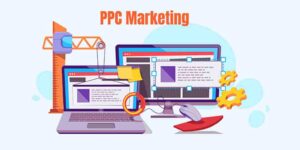Introduction
In the digital age, businesses constantly seek the most effective ways to generate leads and boost sales. The plethora of platforms available today can be overwhelming, each with strengths and weaknesses. This blog explores the most popular sales and lead generation platforms, comparing their effectiveness to help you decide which might deliver better results for your business.
Social Media Platforms
Social media has revolutionized the way businesses connect with potential customers. Platforms like Facebook, LinkedIn, Instagram, and Twitter offer unique opportunities for targeted marketing.
- Facebook: Known for its powerful advertising tools, Facebook allows businesses to target users based on demographics, interests, and behaviour. Its vast user base ensures a wide reach, and features like Facebook Lead Ads simplify the lead generation process by allowing users to fill out forms without leaving the platform.
- LinkedIn: As a professional networking site, LinkedIn is particularly effective for B2B marketing. Its sophisticated targeting options, such as industry, job title, and company size, make it easier to reach decision-makers. LinkedIn Lead Gen Forms can capture lead information directly on the platform, enhancing conversion rates.
- Instagram: With its visually-driven content, Instagram is ideal for brands targeting younger demographics. Features like Stories, IGTV, and shoppable posts provide creative ways to engage with potential customers and drive sales. The platform’s integration with Facebook Ads Manager allows for precise targeting.
- Twitter: Known for real-time engagement, Twitter can be useful for brand awareness and customer interaction. While it may be less effective for direct lead generation, its advertising options can drive traffic to landing pages or websites where leads can be captured.
Search Engine Marketing (SEM)
Search engines like Google and Bing offer robust platforms for lead generation through search engine marketing (SEM).
- Google Ads: As the leader in search advertising, Google Ads provides extensive reach and powerful targeting options. Businesses can target users based on keywords, location, device, etc. The platform’s pay-per-click (PPC) model ensures that you only pay when someone clicks on your ad, making it cost-effective. Additionally, Google’s extensive network of partner sites broadens your advertising reach.
- Bing Ads: Although often overshadowed by Google, Bing Ads can be a valuable addition to your SEM strategy. Compared to Google, Bing users have higher conversion rates and lower cost-per-click (CPC). The platform’s integration with LinkedIn for targeting professionals adds another layer of precision.
Email Marketing
Despite being one of the oldest digital marketing channels, email marketing remains incredibly effective for lead generation and sales.
- Personalization: Email marketing allows for highly personalized communication. Segmentation and targeted campaigns can deliver relevant content to specific audience segments, increasing engagement and conversion rates.
- Automation: Platforms like Mailchimp, HubSpot, and Sendinblue offer automation tools to nurture sales funnel leads with minimal manual intervention. Automated workflows can send timely follow-ups, promotional offers, and content tailored to the recipient’s behavior and preferences.
Content Marketing
Content marketing focuses on creating valuable content to attract and engage potential customers.
- Blogging: Regularly publishing high-quality blog posts can drive organic traffic to your website. By addressing common pain points and offering solutions, you can position your brand as an industry authority, building trust and generating leads.
- Webinars and E-books: These formats allow for deeper engagement with your audience. Webinars provide a platform for real-time interaction, while e-books can be offered as gated content, capturing lead information before access.
- SEO: Optimizing your content for search engines ensures it reaches a broader audience. Effective SEO strategies increase the visibility of your content, driving more organic traffic and potential leads to your site.
Paid Advertising
Beyond social media and SEM, other paid advertising platforms can drive significant results.
- Display Advertising: Networks like Google Display Network and programmatic advertising platforms can reach users across millions of websites and apps. Display ads are effective for brand awareness and retargeting campaigns.
- Native Advertising: Platforms like Taboola and Outbrain offer native ads that blend seamlessly with the content on a website. These ads are less intrusive and can drive higher engagement and lead generation.
Conclusion
Each platform has unique advantages, and the best choice depends on your business goals, target audience, and budget. For B2B companies, LinkedIn and email marketing might deliver better results due to their targeting capabilities and professional user base. B2C businesses might succeed more with Facebook, Instagram, and content marketing due to their broad reach and engagement potential.
Ultimately, a multi-channel approach, combining the strengths of various platforms, is often the most effective strategy. By leveraging the unique benefits of each
To know more about Social Media Marketing, Please visit https://paypercampaign.com





